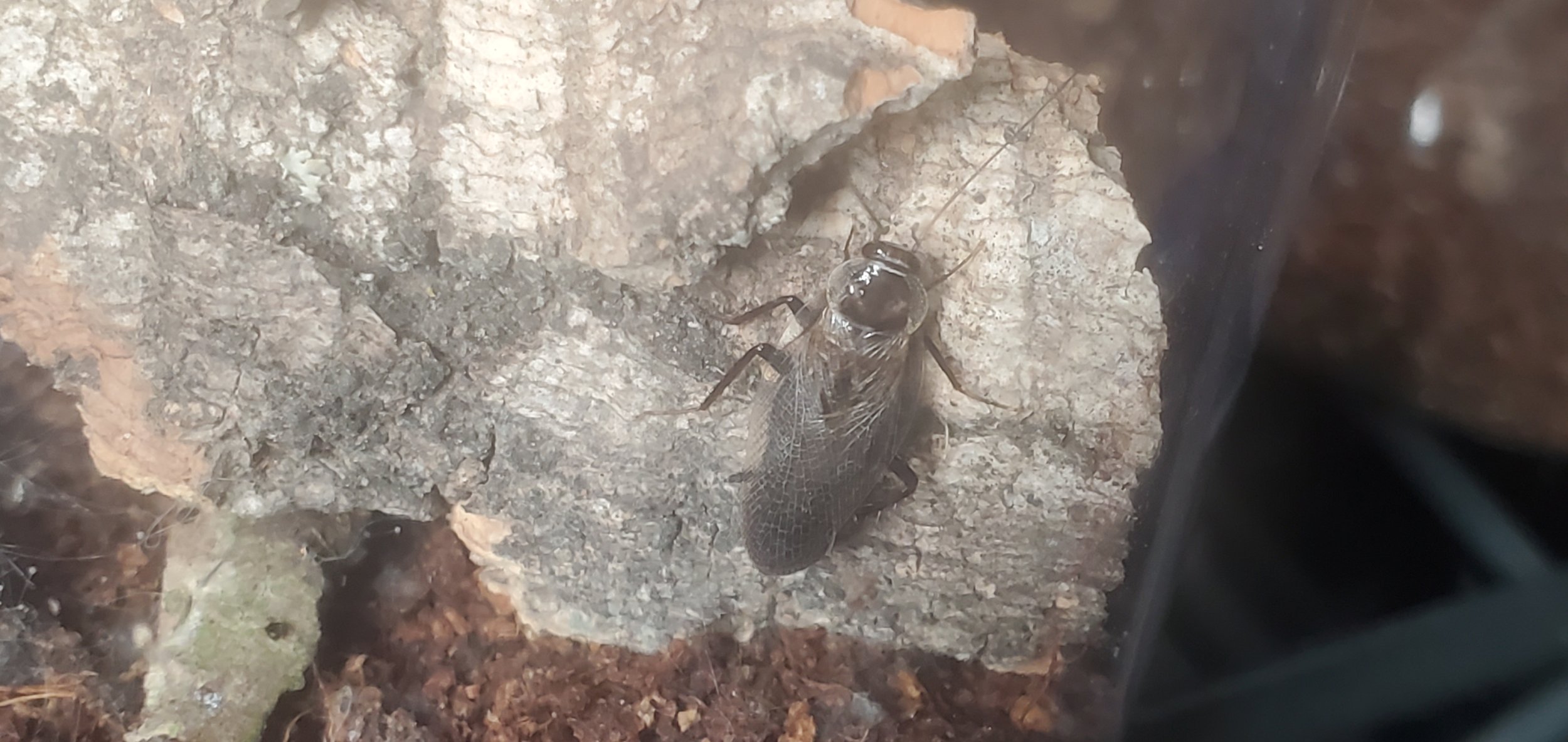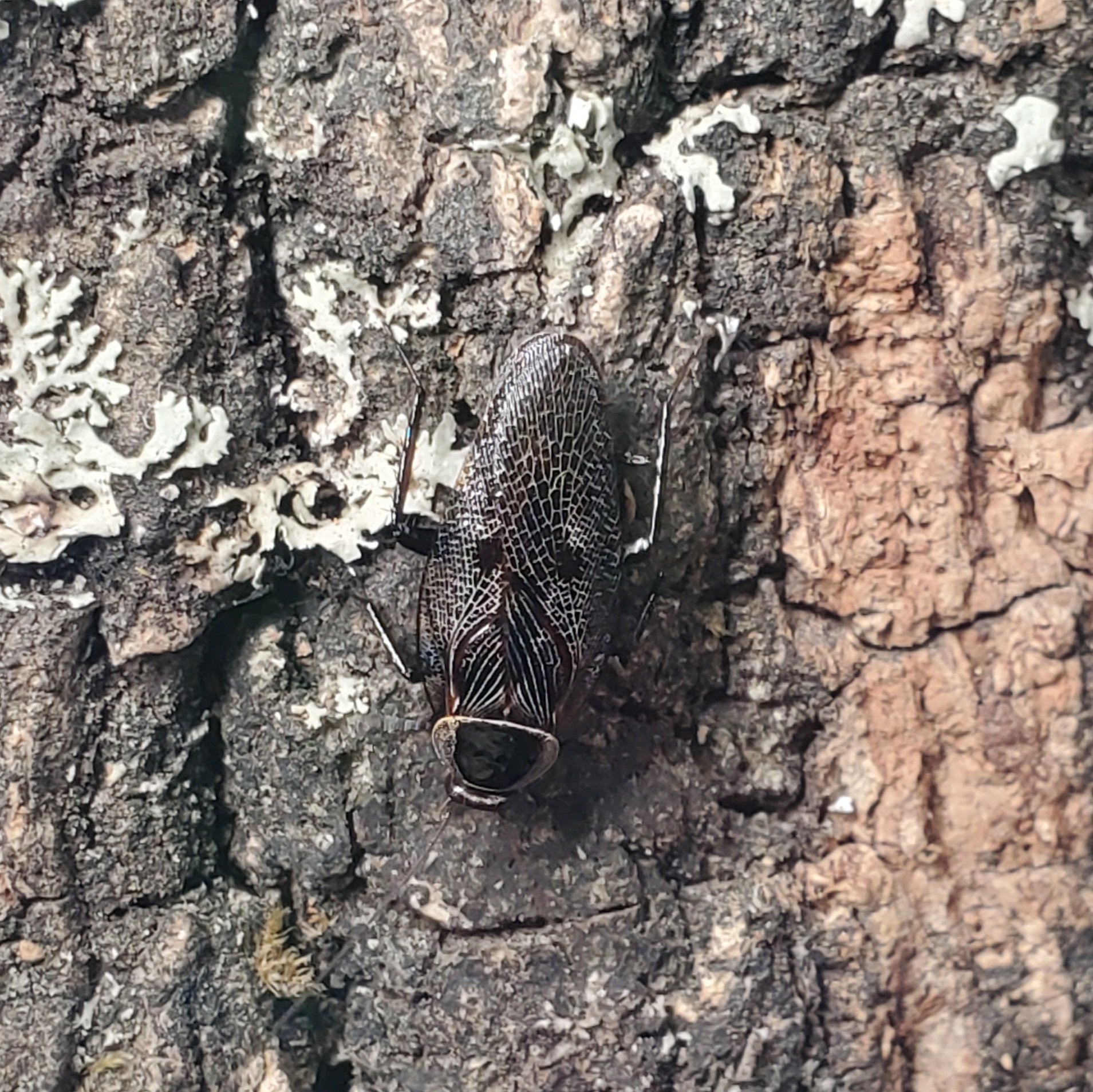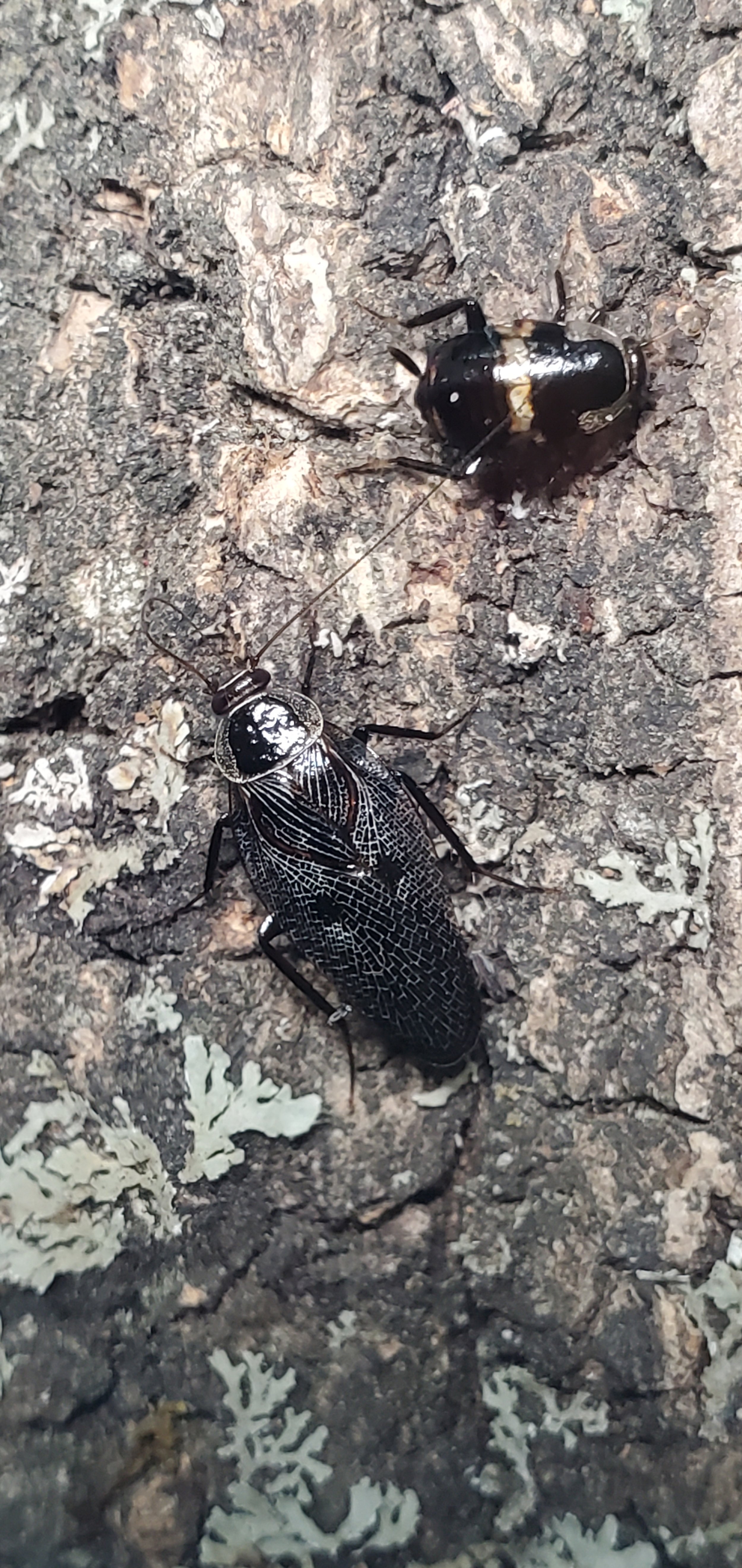Allacta bimaculata, the Two Spotted Wood Roach
Welcome to the entry post of my Allacta bimaculata keeping experiences.
I have recently been able to establish a relationship with a Chinese wildlife catcher in Guangxi. These persons will go into the forests and capture everything and anything they can, take photos and then post on selling platforms like Taobao and others. I don’t think it is a sustainable practice especially if it starts to pick up in popularity, but still provides some opportunities like this to get some wild caught roach species from farther Chinese regions, where it would be to costly (holidays, travel and money) to do this myself.
These wild life catchers have little experience about the animals they are capturing and when it comes to insects, especially roaches, then the knowledge is absolutely zero.
While I was browsing through the selling apps, I came across his selling post for two small black on gold nymphs.
Absolutely stunning in my opinion, but very poorly treated. They were missing legs, legs parts and most of their antennae. Nonetheless I decided to get them both.
They arrived safely but a little bit lethargic. I did my best to try to feed them and recover them, but unfortunately one of them ended up dying. In this first keeping experience, I contacted the seller again, to see if he could get more of these. And he did manage to capture another 12 individuals. Unfortunately, and as I mentioned before, they have almost zero knowledge about insects, and the way the roaches were shipped out was appalling. Nymphs mixed with leaf litter and stones everywhere… when they arrived, most of them were dead, with the exception of 4 nymphs.
So at this moment I have a total of 5 individuals in my colony.
Of course, I had no idea what species they were, since I am still giving my first steps into roach identification, so I had to go to the one of the few persons I knew could help me.
The Invertebrate Dude - you can read his blog by clicking the link (highly recommend).
And of course TJ immediately pointed me on the right direction, saying that these would be Allacta sp.
After a quick research, these were the potential candidates which have been recorded in China:
Allacta bimaculata Bey-Bienko, 1969: 858. China (Yunnan, Guangxi)
Allacta ornata Bey-Bienko, 1969: 859. China (Yunnan, Hainan)
Allacta robusta Bey-Bienko, 1969: 860. China (Yunnan)
Allacta transversa Bey-Bienko, 1969: 859. China (Hainan); Vietnam
Allacta xizangensis Wang et al., 2014: 449. China (Xizang)
Allacta alba sp. n. China (Zhejiang)
Allacta bruna sp. n. China (Hainan)
Allacta hainanensis (Liu et al., 2017), comb. n. China (Hainan)
I reduced the potential list to the first four given the area where the nymphs were being captured (Guangxi).
Allacta bimaculata pre-adult nymph (Guangxi, China)
A couple of weeks later, the first surviving nymph and now the largest molted into a stunning pre-adult nymph, with most of its pre-existing defects corrected.
Allacta bimaculata pre-adult nymph (Guangxi, China)
The golds contrasting with the jet black for me are just breath taking!
And this brings us up to today!
The colony has been doing fine, and just very recently, this same individual matured. It was time to try and confirm exactly which species I am keeping, but by the title you all already know :D.
The coloration was very dull and the two distinctive A.bimaculata spots could only been seen by shining a strong light sideways. But it was good enough for a confirmation.
Allacta bimaculata adult (Guangxi, China)
Allacta bimaculata adult (Guangxi, China)
The adult is still very shiny and with the spots very faded, but I think with more time, it will end up looking like the other online photo references.
Now some references from the following papers :
1 - The Species of Allacta (Blattodea: Ectobiidae: Pseudophyllodromiinae) Occurring in China, With A Description of a New Species
2 - Two new species and a new combination of Allacta (Blattodea, Ectobiidae, Pseudophyllodromiinae) from China, with notes on their behavior in nature
Characterization:
“Bey-Bienko (1969) stated that Allacta bimaculata was characterized by dark spots on the tegmina, distinctive styles, and the color of the head and pronotum. After examining the holotype and specimens kept in collection of SWU, the dark spots on the tegmina are sometimes indistinct, whereas the dark spots on the living individuals in the field are distinct. However, the transverse band on the head and the dark brown mark on the pronotum, and more importantly, the characters of the male genitalia of this species provided herein are sufficient to distinguish it from other species.”
Ecology:
“Previous studies indicated that Allacta species inhabit on tree trunks (Rentz 2014; Wang et al. 2014). Through our field investigations from 2014 to 2017, we found that most Chinese Allacta species are more likely to inhabit tree trunk surfaces or under the bark. Sometimes, individuals are also observed crawling on the leaves or ground. A. bimaculata, A. ornata, A. robusta, A. transversa, A. bruna sp. n., and A. xizangensis are observed resting on tree trunks. Their bodies are maculated (except for A. bruna sp. n.), and some species even have reticulated mottling on the tegmina (e.g., A. bimaculata, A. ornata, A. transversa), which provide an excellent disguise on a tree trunk surface that is covered with lichens and mosses.
[…]
In the pictures above I think its very noticeable the potential of camouflage, as described on the paragraph also above.
[…]
“In the daytime, Allacta individuals may hide under the bark, while during the night, they will come out and crawl on the trunk. When approaching them, they would not act dead or fall down to the ground, but instead hide from the collectors. They can move transversely somewhat like crab and very rapidly slip away to the opposite side of the trunk to escape from being captured. While when the collectors continue tracking them, they will move around to the other side of the trunk, or go to a higher level on the trunk. Characters such as the presence of pulvilli only on the fourth tarsomere and spines on the other 3 tarsomeres help Allacta species efficiently move about on the trunk. They can conduct such fast transverse actions probably because they only walk or climb “on tiptoe” (Wang et al. 2014).”
Adhesive structures are frequently reduced or lost in cave cockroaches, perhaps because the clinging mud or the surface tension of water on moist walls reduce their effectiveness (Mackerras 1967; Roth 1988, 1990, 1991a). In a tropical forest, a cockroach that perches or forages on leaves during its active period may retain arolia and pulvilli, but these structures may be reduced or lost in a species that never ventures from the leaf litter (Bell et al. 2007).”
This is the end of this entry log for this species. I am delighted to have them in my collection and I hope to be able to breed them soon as more nymphs mature, so they can later be a well established hobby species for those who like to keep Pseudophyllodromiinae (a subfamily of cockroaches, in the family Ectobiidae).
Thank you for your time and for reading! Let me know if you have any comments, and see you on the next roach entry log!
Cheers!









